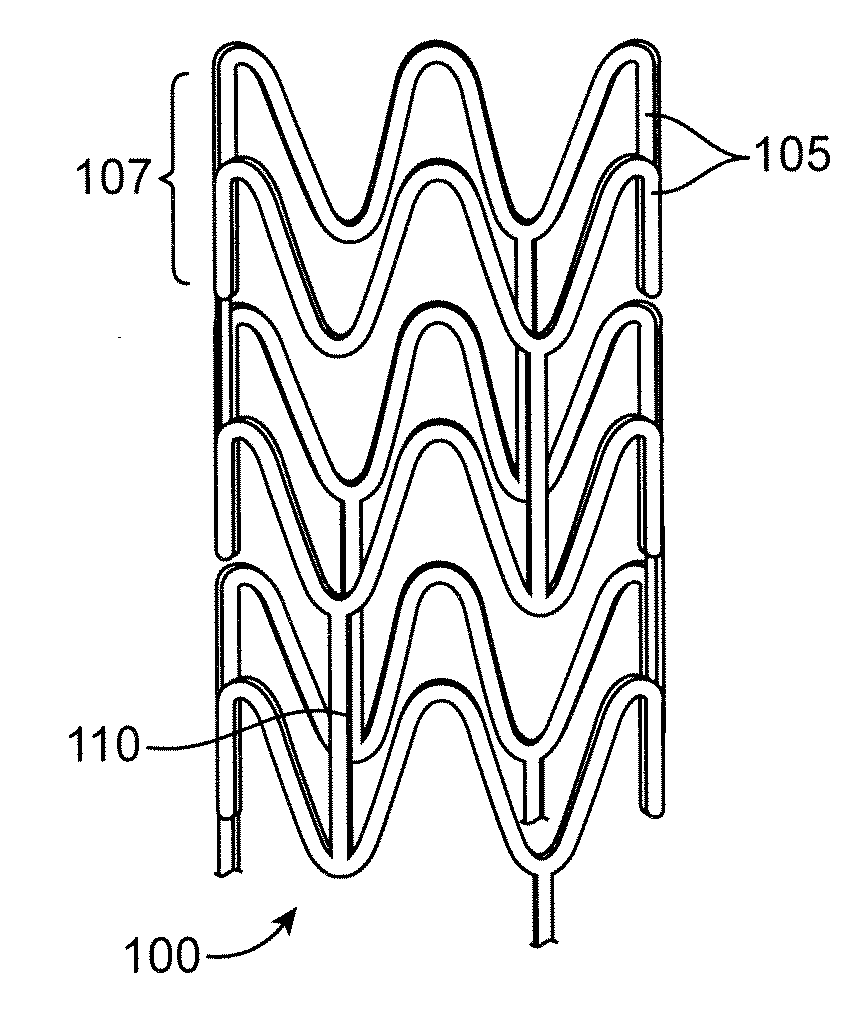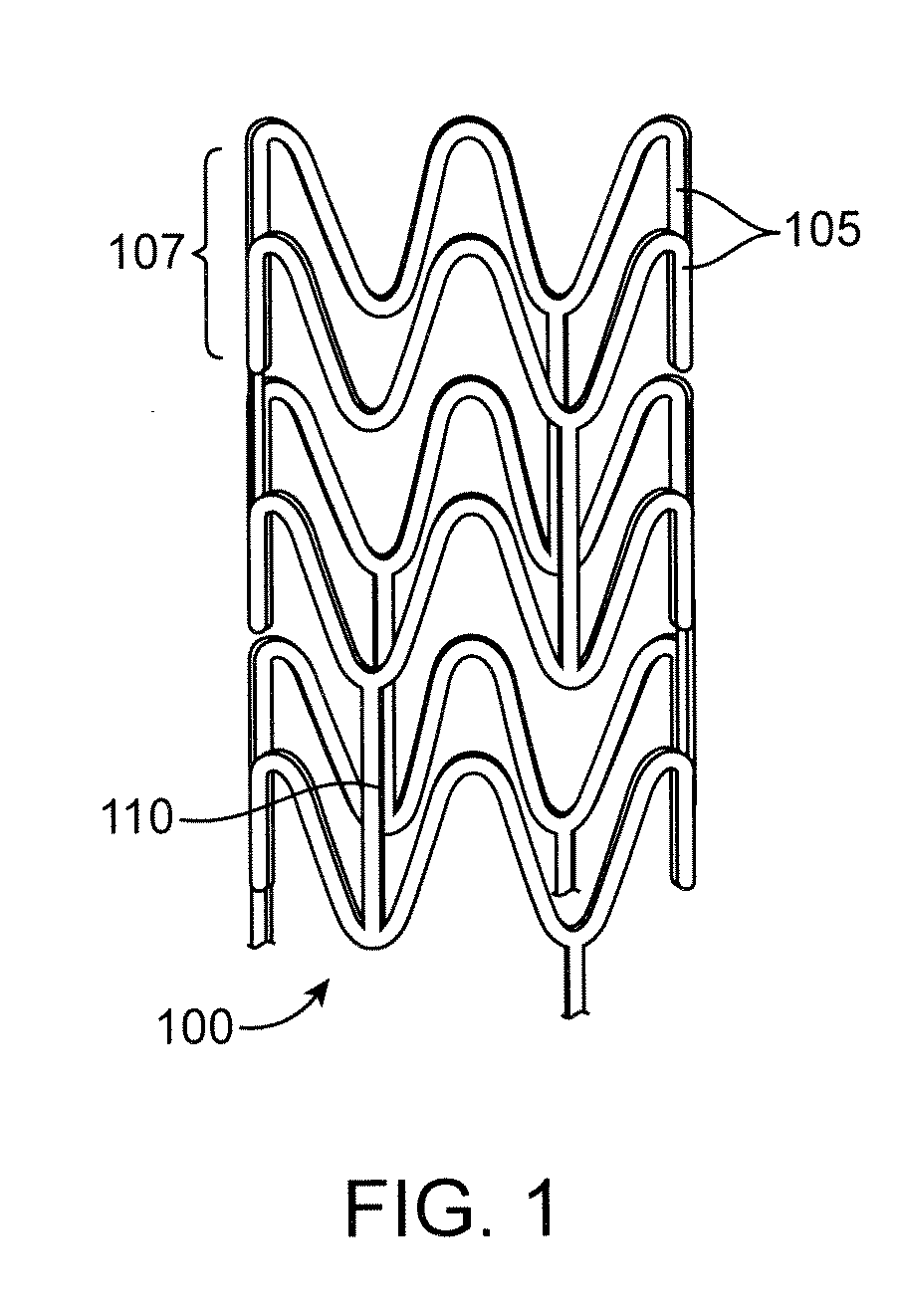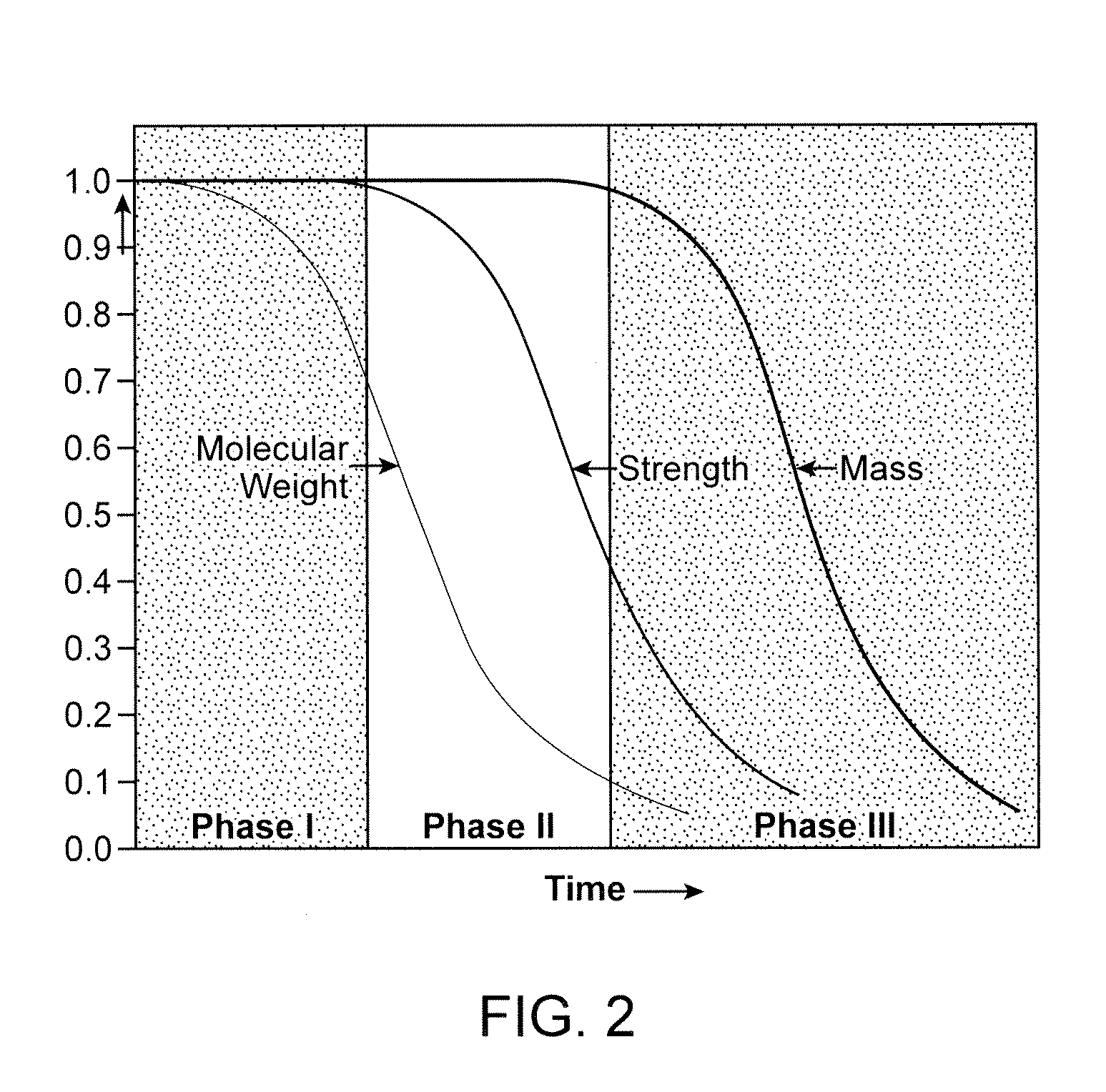Control Of Degradation Profile Of Bioabsorbable Poly(L-Lactide) Scaffold
- Summary
- Abstract
- Description
- Claims
- Application Information
AI Technical Summary
Benefits of technology
Problems solved by technology
Method used
Image
Examples
example 1
Demonstration that Extrusion was the Most Significant Contributor to the Lactide Content
[0153]FIG. 13 shows the PLLA scaffolding manufacture process effect on monomer lactide generation. Two extruded tubing lots were produced with a nominal (<0.02 wt %) and a high (0.97±0.03 wt %). At the nominal lactide concentration (<0.02 wt %), a slight increase in lactide content was detected from extruded tubing to the finished goods (FGs). This was due to the lactide content in the PDLLA coating polymer, which was not expected to contribute to the PLLA scaffold degradation, because once in contact with water, the lactide would elute out considering the thin PDLLA coating and the high solubility of lactide in water. Hence, lactide content in extruded tubes represented that in the FGs. For the extrusion tubing lot with high lactide content (0.97±0.03 wt %), a slight decrease was observed from extruded tubes to the FGs. This decrease was attributed to the increased probability of ester bond clea...
example 2
Showing that Lactide Content in the Extruded Tubes was Equivalent to that in FGs
[0154]Four groups of finished PLLA scaffoldings (FGs) were fabricated from extruded tubing lots with various levels of lactide content (0.02 (nominal), 0.17, 0.57, and 1.08 wt % lactide) by spiking (adding) a pre-determined amount of L-lactide into the PLLA resin prior to extrusion. For all FGs, groups, n=10. For extruded tubing groups, n=2 for groups “1.08 wt %” and “0.02 wt %”; n=10 for group “0.17 wt %”; n=21 for group “0.57 wt %”. The error bars represent one standard deviation.
[0155]FIG. 14 shows the lactide content in the extruded tubes from Gas Chromatography—Flammable Ionization Detection. FIG. 14 shows that the lactide content in extruded tubes was either equivalent to that in FGs or represented the worst case scenario in terms of the effect on degradation. Additionally, FIG. 14 shows that the loss of lactide content from extruded tubes to FGs diminished with the decrease in lactide content in t...
example 3
Lactide Blending in Extrusion: Effect on Radial Strength Change during In Vitro Degradation
[0156]FIG. 15 depicts the radial strength progression over degradation as a function of lactide content of the four lots of extruded tubing from Example 2. Each data point represents n=6. Error bars represent one standard deviation. The radial strength progression over degradation time was tracked. FIG. 15 shows that the higher lactide content shortened the duration that radial strength was maintained in FGs. Although such an effect was not demonstrated for lactide content levels “0.02 wt %” and “0.17 wt %” in this study due to limited experimental time duration, it is expected that similar results would be observed in these lactide content levels.
[0157]Although such an effect was not demonstrated for lactide content levels “0.02 wt %” and “0.17 wt %” in this study due to limited experimental time duration, it is expected that similar results would be observed in these lactide content levels.
PUM
| Property | Measurement | Unit |
|---|---|---|
| Time | aaaaa | aaaaa |
| Time | aaaaa | aaaaa |
| Time | aaaaa | aaaaa |
Abstract
Description
Claims
Application Information
 Login to View More
Login to View More - R&D
- Intellectual Property
- Life Sciences
- Materials
- Tech Scout
- Unparalleled Data Quality
- Higher Quality Content
- 60% Fewer Hallucinations
Browse by: Latest US Patents, China's latest patents, Technical Efficacy Thesaurus, Application Domain, Technology Topic, Popular Technical Reports.
© 2025 PatSnap. All rights reserved.Legal|Privacy policy|Modern Slavery Act Transparency Statement|Sitemap|About US| Contact US: help@patsnap.com



